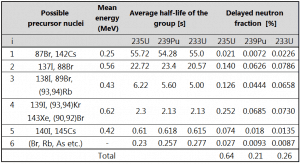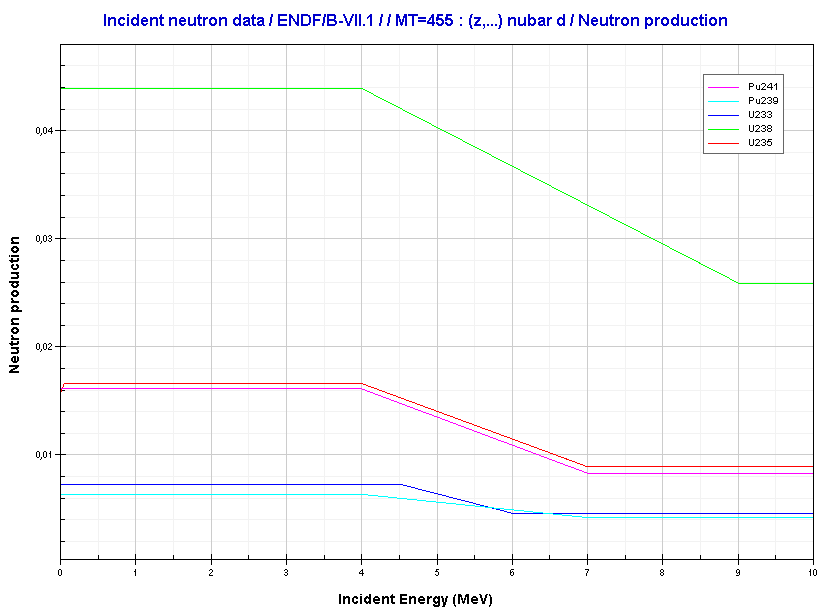Delayed Neutrons

Delayed neutrons are emitted by neutron-rich fission fragments that are called delayed neutron precursors. These precursors usually undergo beta decay, but a small fraction of them are excited enough to undergo neutron emission. The neutron is produced via this type of decay, and this happens orders of magnitude later than the emission of the prompt neutrons, which plays an extremely important role in the control of the reactor.
While most of the neutrons produced in fission are prompt neutrons, the delayed neutrons are important in reactor control. The presence of delayed neutrons is perhaps the most important aspect of the fission process from reactor control. In this context, the term “delayed” means that the neutron is emitted with half-lives, ranging from few milliseconds up to 55 s for the longest-lived precursor 87Br. These neutrons have to be distinguished from the prompt neutrons, which are emitted immediately (on the order of 10-14 s) after a fission event from a neutron-rich nucleus. Although the amount of delayed neutrons is only on the order of tenths of a percent of the total amount, the timescale in seconds plays an extremely important role.
